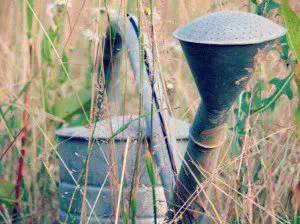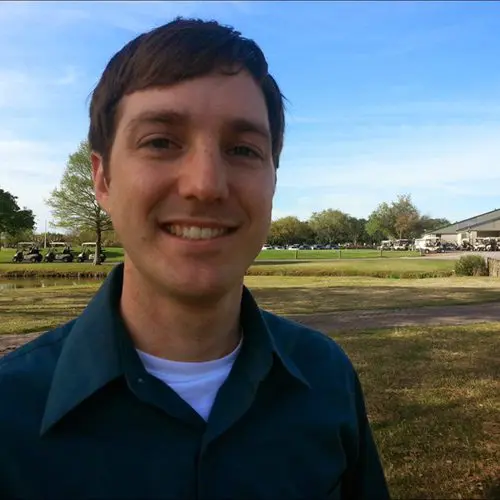
Gardening In Texas: 4 Experts Share Their Top Tips And Favorite Flavors
The first thing that comes to mind when a lot of people hear, “Texas” is “dry heat.” It’s not the most conducive environment for lush landscapes or manicured gardens.
Or is it?
We talked to a handful of professionals – from authors to horticulturists – and got the truth about gardening in Texas. Whether you’re an experienced gardener, or you have no idea where to start, here is some inspiration, some warning, and a few tricks of the trade.
WHY IS GARDENING BETTER IN TEXAS?
There are challenges to raising a garden in our summer heat, but Texas also has its benefits.
GREAT SELECTION
Jayla Fry holds a Bachelor’s of Science in Horticulture, and a Master’s degree in Agriculture Leadership, Education, and Communication. She teaches an introduction of the Texas Master Gardener Program, Earth-Kind Landscaping, and Plant Growth and Development.
I’ve been around gardening my entire life. My mother and grandmother both had beautiful yards and vegetable gardens, and their love of plants spilled over into me.
She is also a co-editor for the Sixth Edition of The Texas Master Gardener Handbook, and a co-author of two of its chapters. She points out the selection of plants available to Texas gardeners:
[Texas has] an excellent variety of native and adapted plants to choose from that are not only beautiful, but also need very little care and water. I believe we have to be responsible with our natural resources, and utilizing plants that do not require large amounts of inputs (fertilizers, pesticides, or water) is one of the best way to protect our environment while gardening.
SILVER LINING
Joseph Kilgus is a studio and nature photographer based in Austin, Texas.
I started gardening as a small boy in my parent’s garden, and picked it up again in 2009 when I started an herb garden. I caught the gardening bug, and our small herb garden quickly grew into a flower/butterfly garden and veggie garden!
Kilgus has a different outlook on the warm climate in Texas:
It’s more of a challenge, since certain areas of Texas are prone to drought and, therefore, require irrigation or more frequent watering. But gardening is better in Texas because of the abundant sunshine and two distinct growing periods: spring and fall planting.

Judy Barrett was the founding editor and publisher of the magazine HOMEGROWN: Good Sense Organic Living for Texas. She has authored and edited several books on gardening, hosted the public television series The New Garden, and contributes regularly to several publications.
I started gardening as a child. My daddy dug me a little flower bed where I planted Zinnia seeds. My grandfather was a big vegetable gardener, and I loved to follow him up and down the rows. As soon as I got my own yard I started digging.
Barrett agrees that there is a clear benefit to the Texas heat:
You can garden year-round in Texas. There are lots of wonderful plants that can cope with the dry heat. You just have to look for them, and work with your soil to make it better. Compost is the answer to lots of problems, and anyone can make or find good compost in Texas because it is almost always warm enough for the pile to keep cooking. Flowers bloom longer, veggies produce faster and spring comes earlier. What more could a gardener want?
4 BEGINNER MISTAKES TO AVOID
You don’t need a degree in horticulture to start digging up your yard. You will make some mistakes and learn some lessons along the way, but here are four lessons you can learn from someone else’s mistakes.
1.) DON’T OVER-WATER
Brian Geck works for the North Central Texas Council of Governments in the Environment & Development Department, and works on the Texas SmartScape program. His personal interest in gardening and using native plants to reduce water consumption helps to guide the program, along with a group of dedicated water conservationists from member organizations.
If you water too much or too often, you weaken the plant’s root system. Watering too often will result in shallow roots, while watering too much will result in too few roots to sustain the plant through the summer – among many other possible issues. The key to a strong root system is deep, infrequent watering. About one inch of water a week will suffice for native Texas plants.

2.) START SMALL
You may be enthusiastic, but take it slow.
Be realistic about what you can do in your garden. I often get so excited that I over-do my plantings, and then I struggle to take care of them. – Fry
Many gardeners cite the relaxing nature of the hobby, so don’t lose out because you started too big.
3.) STAY LOCAL
From magazines to television, there are images of beautiful gardens everywhere, and while it is possible to get almost every flower or veggie you see in someone else’s garden, it may not be a good idea.
I think the biggest mistake beginners make is to assume if it grows anywhere, it will grow where you are. We see beautiful things in pictures and magazines, and assume we can grow them just because we want to! We need to learn about what we have, and what the plants need. Once you know that, you’ll be much more successful.
This is one good reason to shop at local nurseries where employees know the answers to your questions. Just because it is for sale in your local big box store doesn’t mean it will grow in your climate or soil. – Barrett
4.) TIMING IS EVERYTHING
Maybe not everything, but it’s more important to gardening than you might think.
A big mistake new gardeners make is planting at the wrong time. Research and plan. The internet contains a wealth of information specific to your area, including the best planting times, and suggested plant species/varieties. – Kilgus
Spring is not necessarily the best time to plant everything, so make sure you know what your chosen seeds and starters need.
TIPS AND FAVORITES
Finally, we asked these Texas landscaping pros about their gardens – What makes them special? What are some of their favorite species? Here are their top tips, so you can earn your green thumb a little faster.
DESIGN IT AROUND YOU
Consider what you want to get from your efforts, look at your specific piece of Texas real estate, and put together a garden that is uniquely you.
I recently moved to a new place, and so I’ve started from scratch with landscaping, vegetable gardening and fruit plantings. My garden is my dream come true. It is designed to nourish my family physically, and provide a creative outlet where my children can discover nature and beauty in their own backyard. – Fry
No matter how beautiful your neighbor’s yard might look, do what works for your family.
KEEP IT INTERESTING
Designing your landscape around your family and your plans doesn’t mean it has to be the same year after year.
I only plant things I love in my garden. Because most gardens have limited space, it is just silly to waste it on plants you don’t enjoy. I plant zinnias to have flowers all summer, herbs to have their taste and fragrance in the house, and veggies we all love to eat.
I also plant something peculiar every year. One year it was banana cantaloupe. Another year it was lemon cucumber. Tomatillos started me on the garden writing path, and the artichoke in the front yard is a traffic stopper ever year. Don’t stick with the same old varieties and plants every year. Check out heirlooms, herbs, natives, and find something unusual that will make you smile. – Barrett
In addition to different varieties, try a whole different kind of garden:
Our garden is unique because we’ve integrated three gardens into one relatively small space: an herb garden, a flower and butterfly garden, and a vegetable garden. – Kilgus
There’s no reason to think you should only do flowers or veggies, even in the same space! The added benefit is that the more you try, the more you learn, and the better gardener you become!
PLANT SMART
You don’t need hours every day to tend to your yard if you plan it right.
My landscape requires very little work because I planted all Texas SmartScape plants, which means they are native to the region. While other people struggle to keep their flowers alive in the hot Texas summer, my garden is thriving and blooming. – Geck
If time is not on your side, you can still come home to a beautiful garden as long as you stick with native, heat and drought-resistant plants.
BETTER IN TEXAS
Texas may not be the first place that comes to mind for a lot of gardeners nationwide, but those who have grown up, studied, and/or dug into our soil, know that gorgeous gardens are as much a part of the landscape here as anywhere else.
If you’re looking for a Texas landscape to call your own, contact us here or give us a call. We know of several great yards you might like to dig into. Happy gardening!
